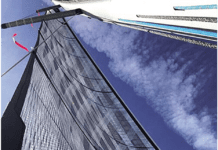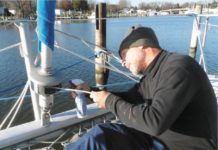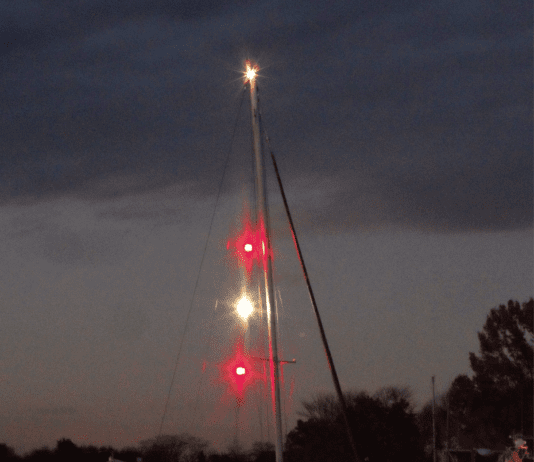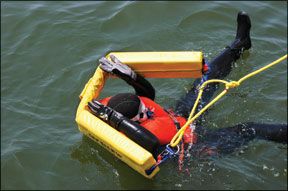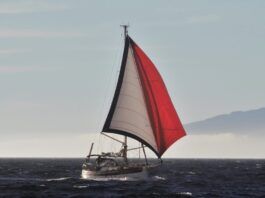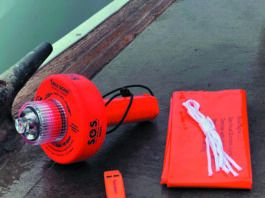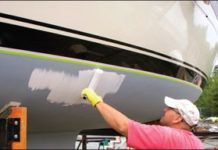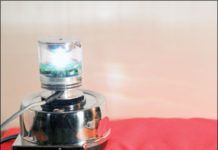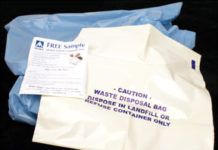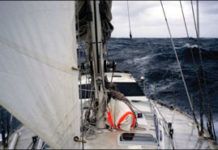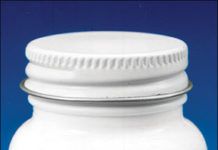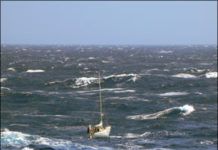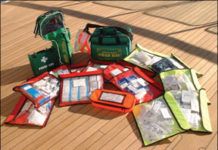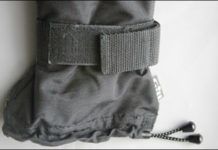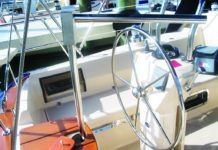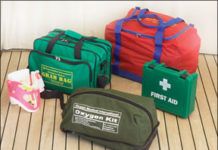Mailport: 04/09
I read with interest your evaluation of first aid kits, which wrapped up with the final installment in the December 2008 issue. Id like to add a couple of points: Weekend, cruising, and bluewater sailors should invest in a good up-to-date first aid and CPR course. It is as important as a functional bilge pump. The responsible sailor can outfit a substantial and superior first-aid kit for much less money than a commercially available kit. The kit should be appropriate for the expected duration a victim will need treatment prior to evacuation. Most commercial kits contain a lot of fluff and are unnecessarily redundant-a lot of Band-Aids. I stress to distance sailors stocking a few prescription items and aggressive treatment for seasickness, beyond Bonine. I favor a solid medical text such as "A Comprehensive Guide to Marine Medicine," by Dr. Erick Weiss and Dr. Michael Jacobs, or "Medicine for Mountaineering and other Wilderness Activities," by James Wilkerson. The latter is available from Mountaineer Books. Both texts give guidance on stocking kits appropriate for your boat. Remember, the victim may be the captain or medical officer, and a novice may be the one rendering treatment. A medical guide is an invaluable resource.
Signal Mate Review
Compliance is signaling in restricted visibility. This is why we became interested in Signal Mate and its approach to automating sound and light signaling, a big plus for short-handed sailors. The companys console-mount controller and its portable emergency signaling kit offer great capability and quite a bit more. The easy-to-operate push-button console actuates digital switching circuitry that controls light, and sound signals are pre-programmed to indicate anchoring and making way in low visibility, as well as designating emergency and distress situations. Theres also a capacity to manually control the signaling process, and to select sound, light, or both as signaling options. The unit can connect to the boat horn or other audible device or can be wired to a mast-mounted maneuvering light.
Of Leg Splints and Sani-Bags
During our recent testing of medical kits (June, August, October, and December 2008), four products caught Practical Sailor testers attention. The first is the Sam Splint, developed by Sam Medical Products. A moldable piece of aluminum surrounded by closed cell foam, the Sam splint can be used to quickly immobilize limbs and joints in the case of a fracture or severe sprain. To use, simply shape the splint to surround the injured area and secure it with elastic bandage or tape. Available online through emergency medical suppliers or camping equipment retailers, the Sam splints come in finger-size to femur-size, with a 36 x 4-inch roll (enough to immobilize a lower leg) selling for $13 at Campmor (www.campmor.com).
Heavy Weather Sailing Gear
From sea anchors, drogues, and trysails to forereaching and heaving to, tactics and gear for surviving a storm at sea vary greatly. During a high-latitude circumnavigation, Evans Starzinger and Beth Leonard, aboard their 47-foot Van de Stadt sloop, had several opportunities to test heavy-weather sailing tactics. The couples main storm gear was a Galerider sea drogue, made by sailmakers Hathaway, Reiser and Raymond, is a webbing bowl with a wire hoop. Deploying the drogue involved a bridle of strong nylon lines connected to the Galerider rode via an oversized galvanized swivel. Starzinger and Leonard used the Galerider when running before the wind in gale-force conditions. The drogue helped slow the boat, kept it from surfing down the face of a wave, and provided directional stability, which allowed their autopilot to maintain control. Drogues and other storm-survival gear and tactics are particularly necessary for short-handed crews and boats that tend to surf in heavy weather. Other storm gear for sailboats that Practical Sailor looked at included the Jordan Series drogue and the Seabrake drogue.
Cures for Seasickness
Every onboard first-aid kit should have medication to treat seasick crew. Practical Sailor magazine surveyed sailors about the over-the-counter and prescription drugs they use to treat the nausea, vomiting, and other maladies associated with seasickness and motion sickness. Our review looked at the nine antiemetic medications mentioned in the survey responses, including five typically classified as antihistamines and four prescription drugs. Those sailors surveyed described the effectiveness, dosages, and side effects of seasickness medications. Antihistamines discussed in the survey include Meclizine (sold as Bonine and non-drowsy Dramamine II in the U.S. and SeaLegs in the UK), Dramamine, Marezine, Phenegran, and Stugeron. The prescription seasickness drugs detailed were two scopolamine-based medications: Scopace and Transderm Scopolamine (known as the Patch or the Travel Patch).
Skip Allan Says Farewell to His Beloved Wildflower on Transpacific Crossing
Practical Sailors June and July 2008 issues documented veteran West Coast racer Skip Allans preparations for the 2008 Singlehanded TransPac, a race he eventually won. In this tragic epilogue, Skip describes his final days aboard his custom Tom Wylie-designed sloop, Wildflower. After 62 hours gale-force winds, Skip made the decision to leave Wildflower and transfer to a commercial vessel, the MSC Toronoto. Just before boarding the passing container ship, Skip scuttled the boat he called home-one that he built himself 34 years before. Skip describes in this article the weather conditions, what gear and techniques worked well during the storm, what led to his decision to leave Wildflower, and how he boarded a 1,000-foot-long, 125-foot-high container ship in gale conditions.
Ocean Voyaging Medical Kits Rated for Contents, Quality, and Price
This is the final installment in Practical Sailor’s four-part series on medical kits for sailing. This article looks at Group IV pre-packaged first-aid kits, which are expected to sustain the crew during an extended cruise or ocean passage. Previous articles tapped the best medical kits for daysailors, coastal cruisers, and offshore cruisers. The Group IV kits must provide supplies and medications needed not only for first aid, but sometimes for extended treatment of even the worst injuries and the most serious illnesses. They must enable sailors to cope with anything that can happen to a person at sea for days on end. Test kits included the Adventure Medical Marine 3000, Filedtex Trans-Ocean Pak, and Ocean Medical International’s Class A medical kit. All three kits were stocked with most of the first-aid components that testers outlined as necessary for an offshore cruise. Although the OMI kit was clearly the most comprehensive, its price was prohibitively high. The Trans-Ocean Pak from FieldTex was well-stocked and well-organized, but PS found the kit by Adventure Medical to be the best choice.
Cold-weather Gloves Face Freezing Rain, Hail, and Snow during Practical Sailor Test
Cold-weather sailing apparel needs to be more waterproof, more windproof, and much warmer than gear for most other cold-weather activities. To find the best glove for cold-weather sailing, two Practical Sailor testers took 14 pairs with them on a three-season cruise of the Chilean channels. The cold-weather sailing gloves fell into four distinct categories: mid-weight, water-resistant gloves; heavyweight, neoprene gloves; insulated gloves; and layered gloves comprising an outer waterproof shell and an inner glove liner. The test gloves included the Gill Extreme, Gill Dura-shark Winter, Gill Three Seasons, Gill Helmsman, the Henri Lloyd Offshore Racer, Henri Lloyd Stealth Winter, Musto Frostbite, SealSkinz gloves, Stearns Arctic Water, Gul Anatomic Cut Helmsman, Zero Featherlite by Fairfield Line, L.L.Bean Vortex, Lined Nitrile (heavy-duty rubber gloves), and Montanna Hyvent by The North Face.
The Hunt is on for a Quality, Well-placed Emergency Tiller
A decade ago, Practical Sailor editors began scouring boat shows for the perfect emergency tiller and an ideal stowage system for it. Little more than a simple lever arm that attaches to the head of the rudder stock, the emergency tiller is the device a sailor relies on in the event a steering cable parts or theres some other steering system failure. Our seemingly simple search turned out to be a nearly fruitless enterprise. Boat after boat fell far short of delivering even an average emergency tiller. Heres a look at our favorites and favorite offenders as well as our criteria for a good emergency tiller and where to keep it.
Medical Kits for Offshore Cruising
Practical Sailor’s ongoing evaluation of medical kits continues with a review of pre-packaged first-aid kits designed for offshore cruising. These kits address a full-range of medical needs, from minor cuts, lacerations, abrasions, bruises and sprains to sunburn, seasickness, head trauma, fractures, hypothermia, and burns. Offshore first-aid kits are designed for sailors who might not have access to medical personal for more than 24 hours and contain equipment and medicines capable of sustaining badly injured crew. They also enable a trained caregiver on board to monitor an injured crew member while seeking advice of professionals via electronic communication. The three pre-packaged medical kits reviewed were the Adventure Medical Marine 2000, Fieldtex Coastal Cruising Pak, and OMI Class B Daytripper by Ocean Medical International.













